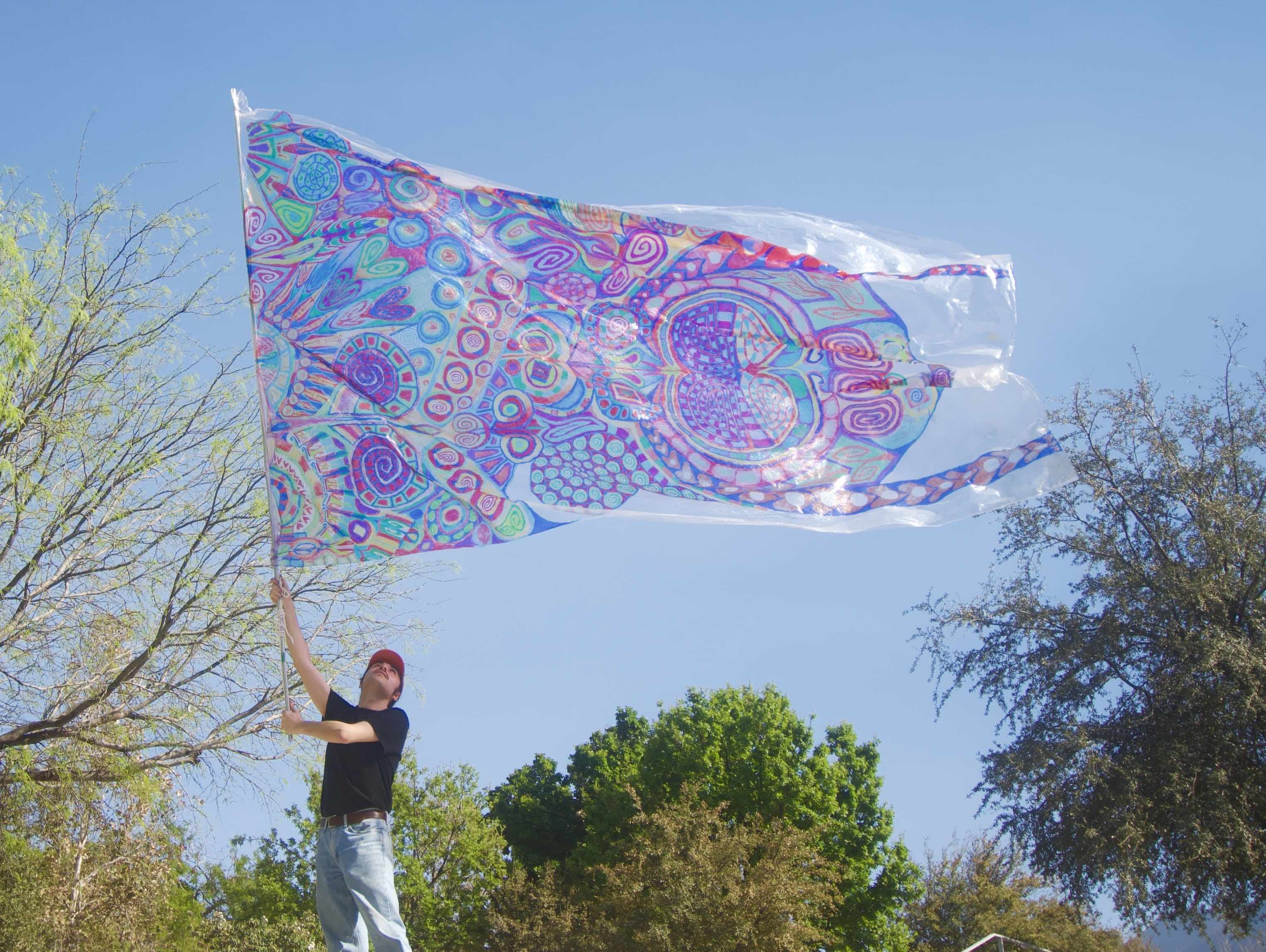
Interview
Ghosts After the Catastrophe: Interview with Emiliano de Ezkauriatza
by Camila Izaguirre
Reading time
6 min
Emiliano de Ezkauriatza's work opens a portal to a dreamlike world. Through a tiny window, he reveals a universe of colorful compositions, a kind of close encounter with hallucinations that become reality.
I met Emiliano de Ezkauriatza at university one day when he entered the workshop holding a book: The Melancholy Death of Chico Ostra, a poetry book by Tim Burton that has been one of my favorite titles for a long time. It caught my attention that someone would carry such a peculiar book. After a few months and as I got to know his work, I began to think that the content of the book and Emiliano's artwork shared a character as mysterious as it was fantastic.
We connected over this and other common interests, both being artists of the same generation, leaning towards painting, but also curious about experimenting with ideas through different mediums.
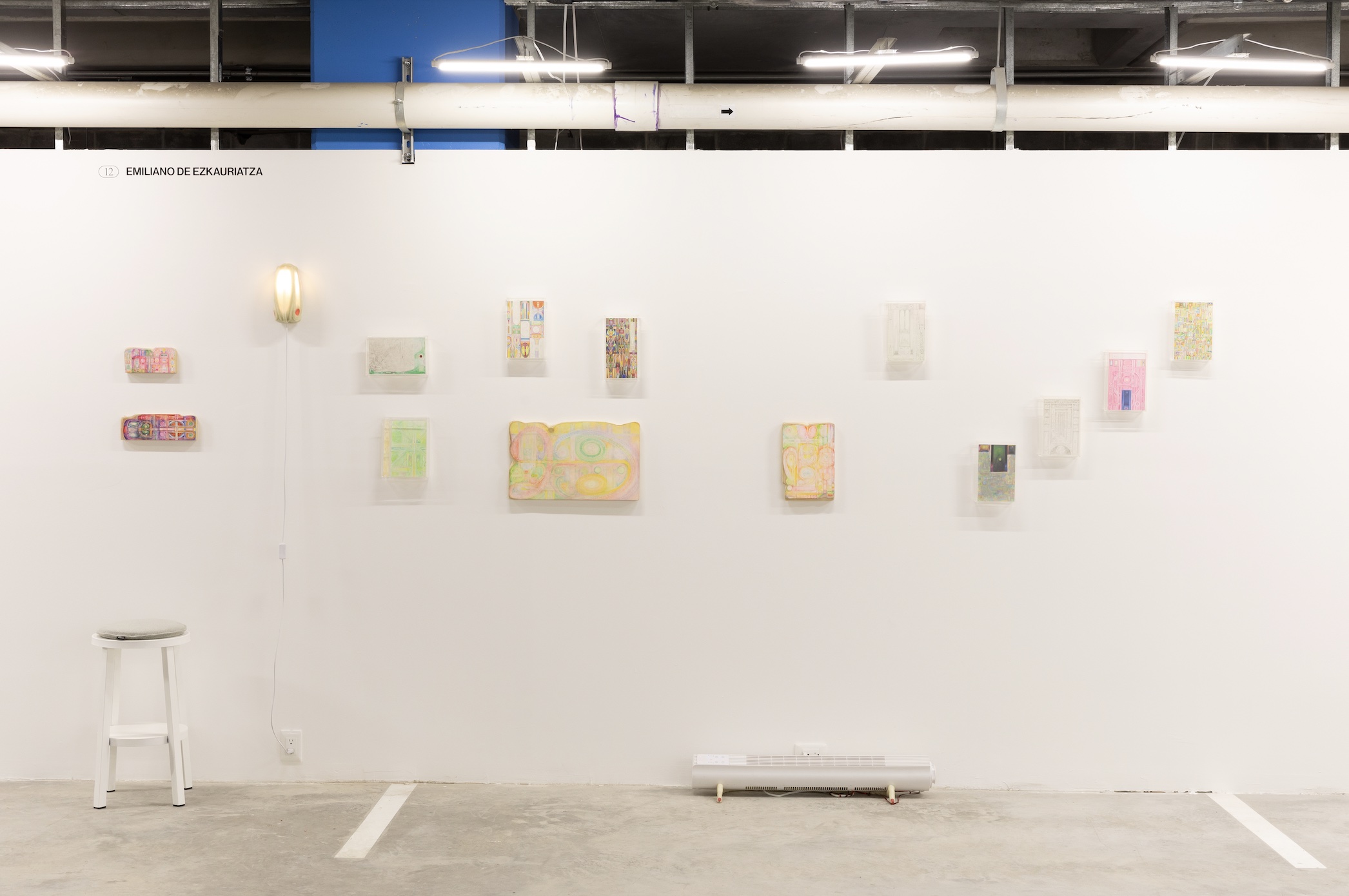
I've witnessed his artistic development in recent years, and, taking advantage of his participation in the Affordable Mexican Art Fair (FAMA), we met to discuss the imaginative processes and themes that inspire his work.
Emiliano de Ezkauriatza: I started drawing when I was around six years old. My interest in drawing stemmed from boredom but also the stress I felt in class. Numbers and letters started shifting, becoming lines, shapes, dragons, and mazes. I had (and still have, I believe) certain issues with concentrating on one thing, so drawing served as a partial escape. I think drawing in school spaces is an exercise that exists somewhere between pedagogy and mischief, between boredom and adventure.
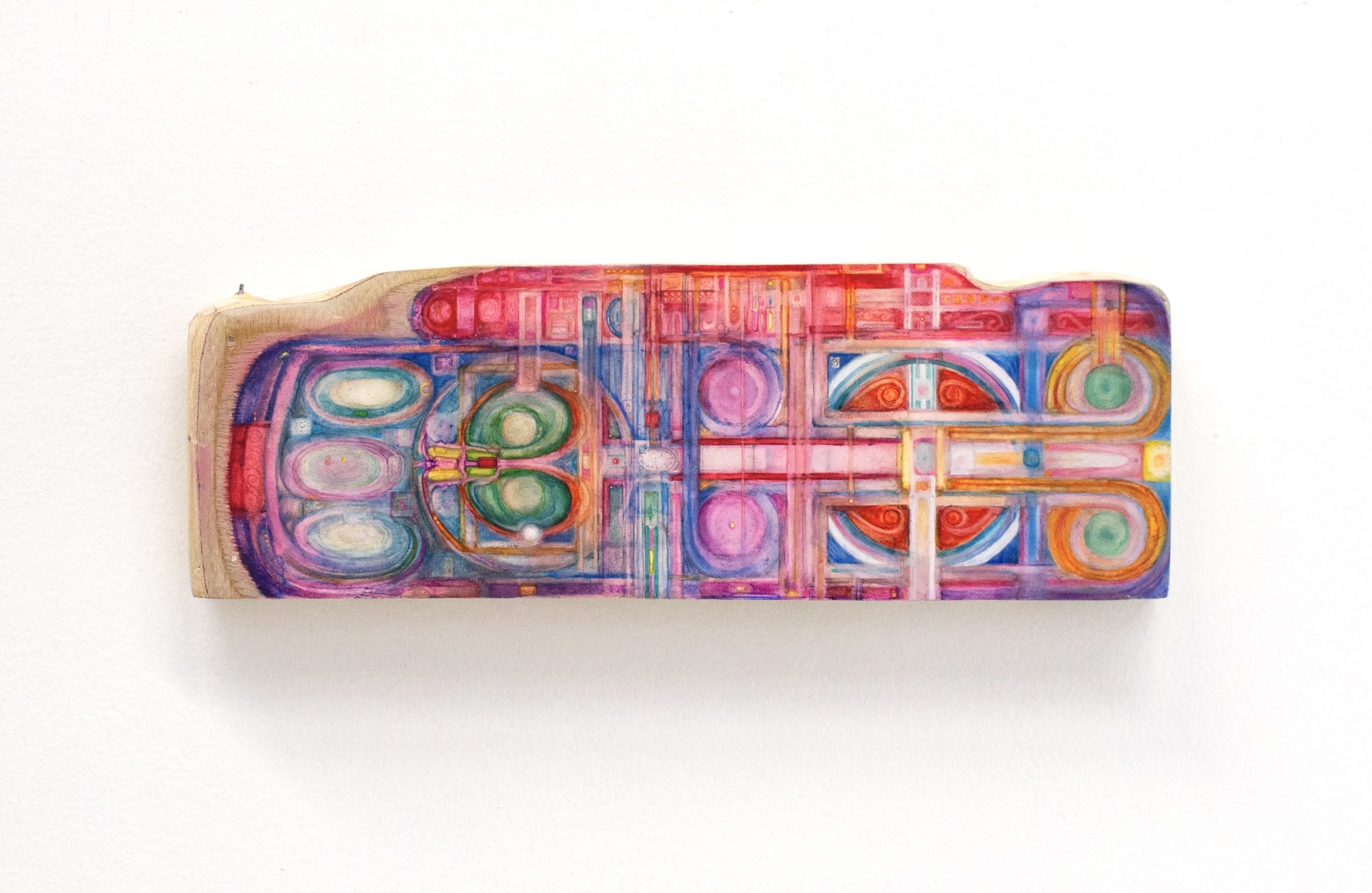
Emiliano acknowledges the transformation of his images over the years and admits that what began as an escapist ritual at an early age has now evolved into increasingly complex forms. In any case, we agree that the playful nature and some aspects of childhood, such as curiosity and ingenuity, are essential within his artistic process. We talked about how this creative freedom fuels his imagination and keeps him in constant motion.
EdE: I feel the need to experiment with materials, to create images that challenge my own conventions, to build a journey through trial and error. It has become more of an urgency than a pastime. There are some things that only happen during artistic practice and do not occur elsewhere. It's a kind of dialogue-monologue that takes shape when external concerns take a break, and you embrace the absurd with seriousness.
Camila Izaguirre: I've seen you transition from one medium to another with a spark of dynamism and restlessness. I recall that the first images I saw of your work were animations. I admire how your work naturally shifts from digital drawing to painting, sculpture, or installation.
EdE: I believe that artistic practice benefits from deviations and shifts towards other things. Creating certain separations between what a person produces gives them breathing space and the necessary room for each to function on its own. It's important not to overuse a feeling that occurs in the production of certain things, be it drawing, painting, sculpting, or building. It’s worthwhile to direct yourself towards other material conversations. Yet, I think weaving them together is crucial, finding certain discourses and narratives that house these things and give them their own logic, beyond typical reasoning.
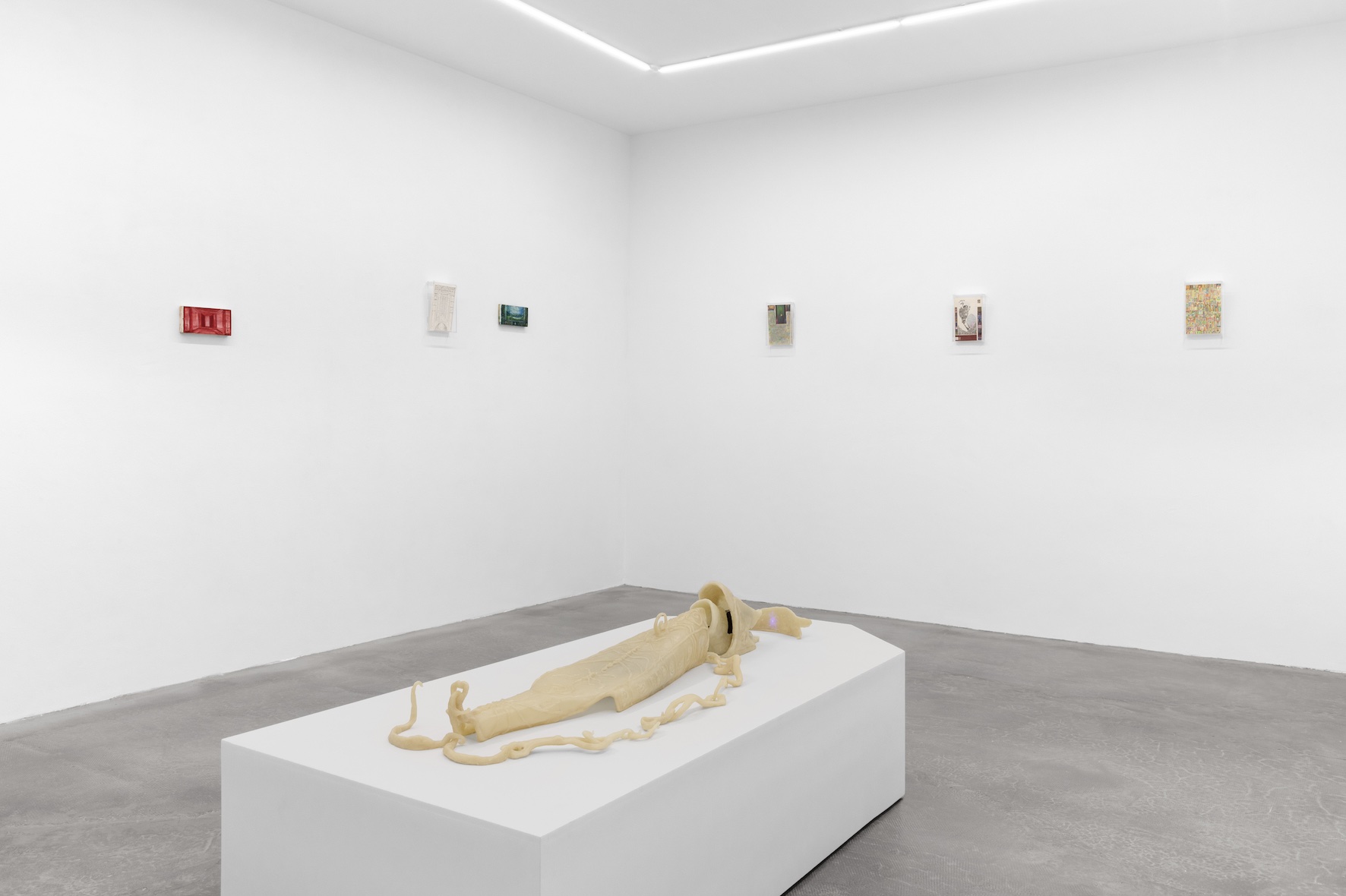
Regarding this ability to unleash ideas while containing them within the space of the artwork (a conceptually complex, physically small place), I think of the curatorial text Fantasy Stagnation. It was an individual exhibition that Emiliano held last year at Galería PEANA (MTY), curated by Christian Camacho and Lucía Vidales. The exhibition text mentions: "Ezkauriatza's work reveals an inner world with densely articulated fantasies, landscapes, and characters. This saturation of motifs and meticulous attention to detail suggests a particular relationship between intimacy, delirium, and the exploration of new worlds."
CI: I envision your work as a narrative puzzle; to me, your pieces are fragments of different stories occurring within the same journey to a dimension of wonders. If that's the case, I wonder about some of the storylines in this collection of stories that intersect, intertwine, and coexist in your work.
EdE: I think of it as a world where an almost unbearable simultaneity parades by, everything moves at a speed that destroys any moment of calm. Nevertheless, I believe that within this schizophrenia there is beauty in creating atmospheres through a Frankenstein of colors and places. I wonder if there is hidden peace in this chaos, if there is happiness in the end of the world as we know it. I think it's a story related to the post-human, to what lies beyond the catastrophe we are currently in. How the Earth and the places we inhabit will still be there when we are no longer, and perhaps how the ghost of the human spirit will never completely disappear.
Our conversation continued as we rambled on about how a diverse mix of ideas, along with various references from visual and literary culture, is part of the inspiration during the creative process.
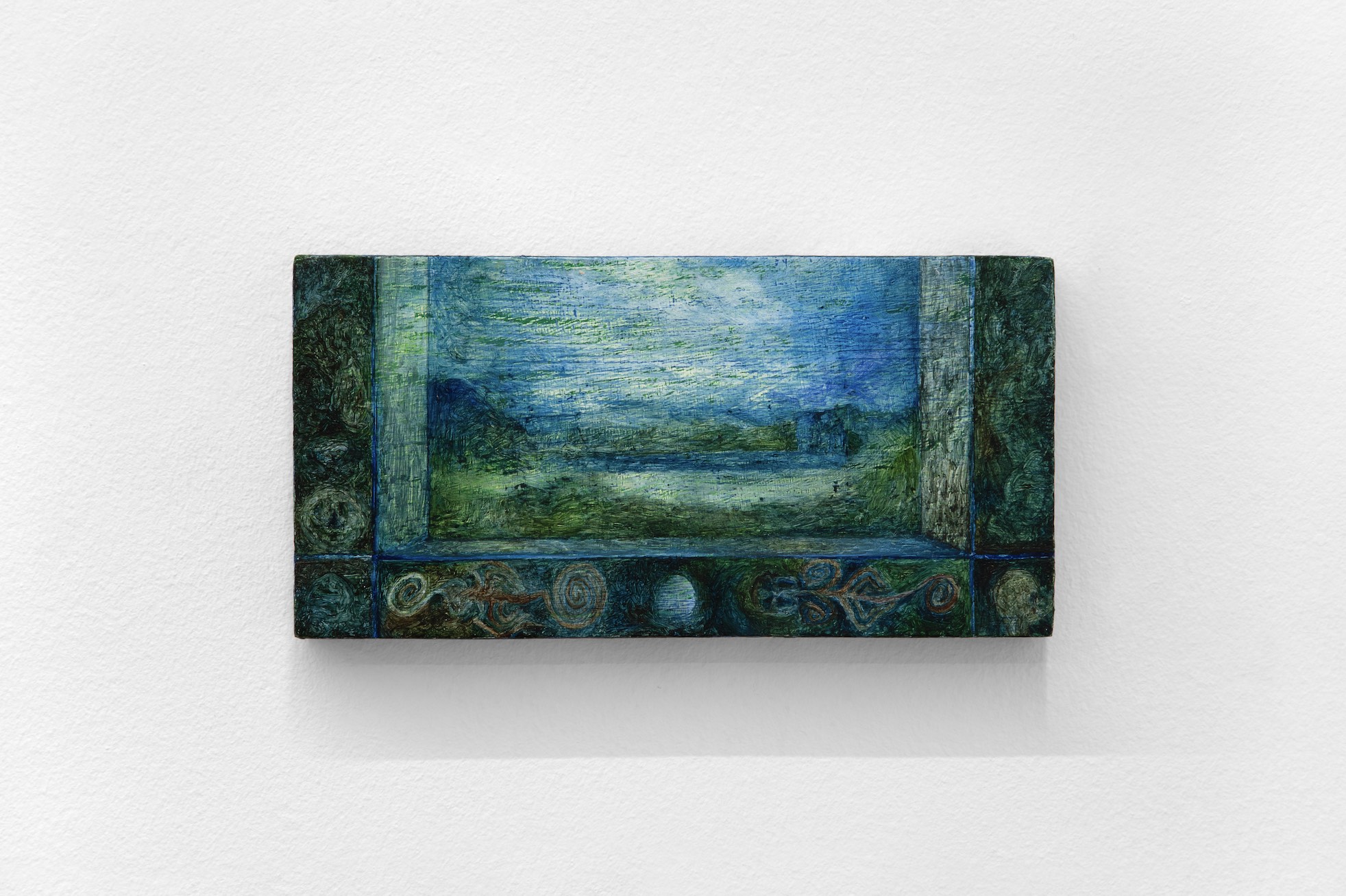
CI: I'm amazed at how you manage to gather in such a small space this group of fantastic beings, dreamlike places, and spiritual abstractions. Inevitably, I wonder what goes through your mind when creating because your works seem out of this world, almost like a modern horror story or a science fiction film. Since I met you and learned about your interest in Tim Burton's work, I've been curious about what else is in your library of interests, things you've been reading or watching recently.
EdE: I'm very interested in fantasy. Right now, I'm reading the second book in the Game of Thrones series, Clash of Kings, by George R.R. Martin. It's incredible to me how such a fantastical world can feel so substantial and real, how literature speaks of that which cannot be and leads human reality to situations beyond the ordinary. Imagination is a gateway to pleasure and horror.
Visually, H.R. Giger is one of the biggest influences I have today. There's something very sinister and beautiful in the blurring of boundaries between machine and human. The sexual machine and the human-object, the fact of no longer reducing human beings to a single thing and accepting their transformation through prosthetics that extend their existence to stranger places.
Translated to English by Sebastián Antón-Ojeda
Published on October 20 2023